Cookbook #190: Our Favorite Recipes, compiled by the Student Letter Exchange, Walter’s Publishing Company, RFD 4, Waseca, Minnesota, circa early 1970s.
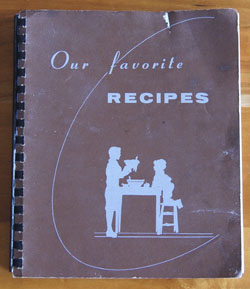
I am clueless as to how this book entered my collection – maybe it was my mother-in-law’s, maybe it was at Walnetto in Boulder where we lived for a year or so.
Our Favorite Recipes is a community cookbook; Google Books lists one similar to mine. I have 8 such cookbooks, as discussed in my post on Menu Melodies. My copy of Our Favorite Recipes does not have any handwritten notes in it, or even food stains. I guessed the publication date from the page below, which lists (among other curious facts) “23 years of dates on which Easter Sunday falls”:
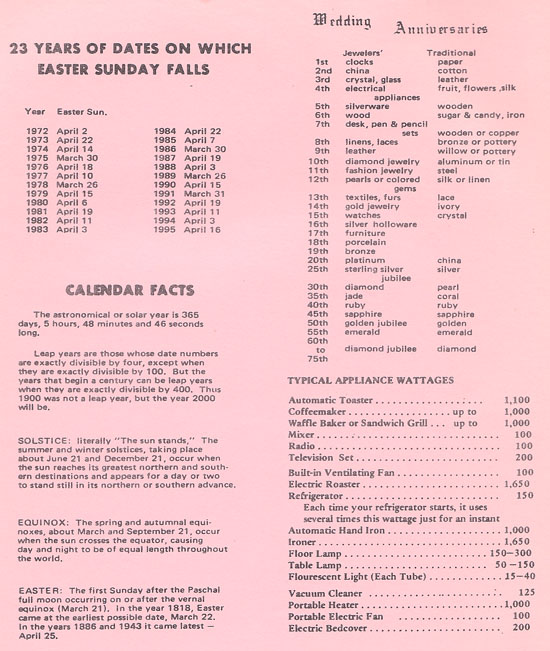
This timetable for roasting turkeys might be more helpful if they gave the temperature setting for the oven:
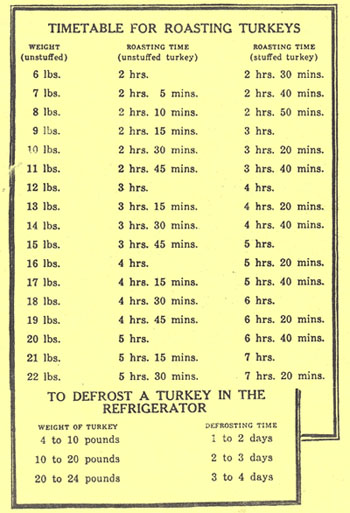
Just in case you need to know the name of that piece of silverware in the drawer:
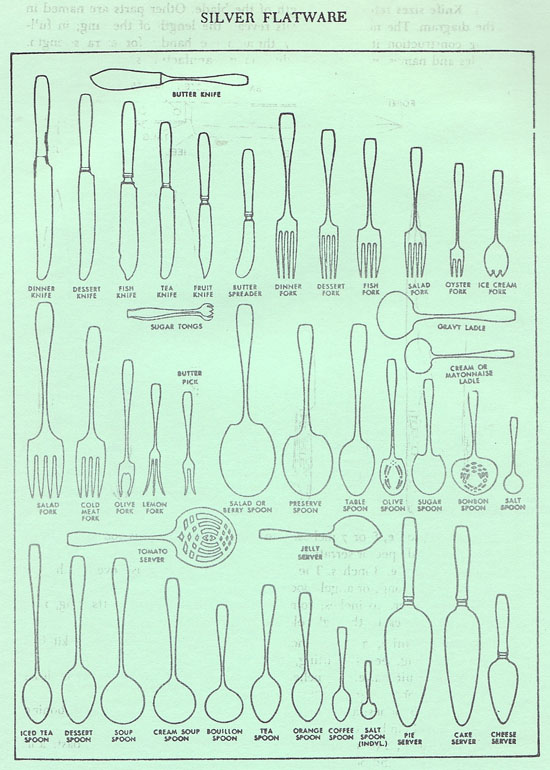
And there is more! I giggle over most of the page below, but the amounts in cans is actually quite useful. Some older recipes call for a “No. 1 can” of an ingredient, a nomenclature only rarely used these days.
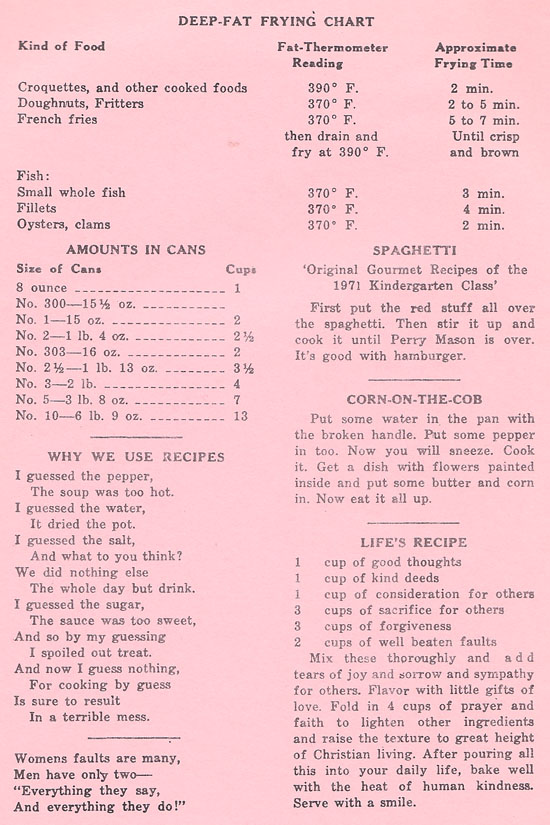
Another canned foods conversion table:
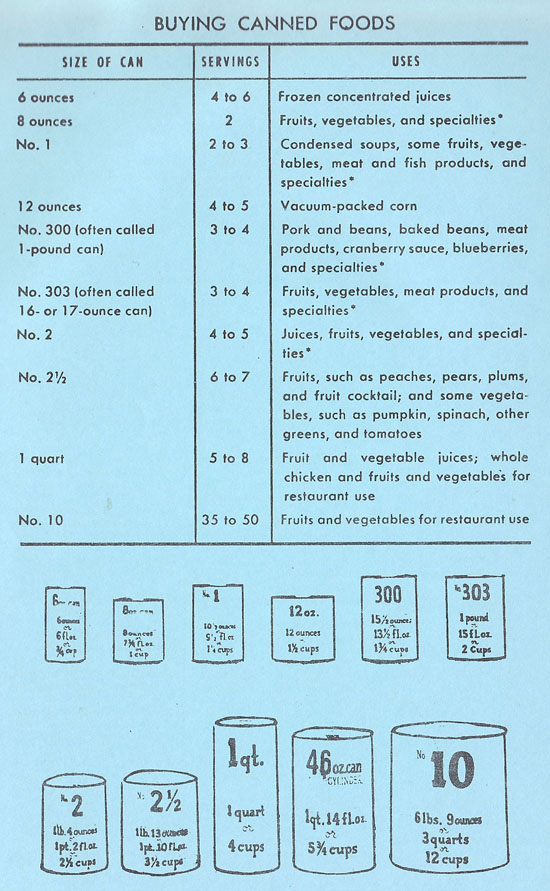
Our Favorite Recipes chapters include appetizers, bread and rolls, cake and cookies, desserts, jellies and jams, main dishes, soups and salads, vegetables, and miscellaneous. What can I say about the recipes? They reflect the cooking of America in the 1960s. Lots of canned soups and fruits, lots of sugar and shortening. I have a hard time finding a recipe I’d even like to try for this blog. I kind of wanted to try the recipe for Pfefferneusse Cookies, as I was reminded of this old favorite of mine when I covered volume 9 of the Encyclopedia of Cooking. But, the recipe calls for 4 pounds of sorghum. Hmmm.
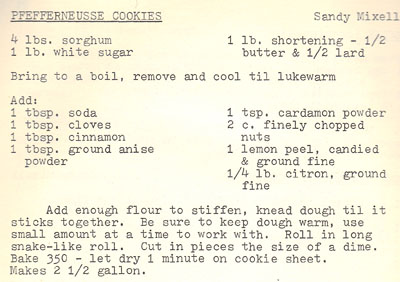
Bumsteads! A bumstead is tuna salad and cheese mixture that is placed in hot dog or hoagie rolls, wrapped in foil, and baked. I used to love these! But I had forgotten what they were called and could not search for a recipe.


I decide to make “Monkey Bread”. I’ve made monkey bread before, but this recipe includes mashed potatoes, so I’d like to try it. Monkey bread is a yeast dough that is rolled out and cut into diamonds, dipped in butter, and put in a baking pan. It can be sweet with the addition of cinnamon and sugar, or savory with the addition of garlic and herbs and cheese.
 I think there is a bit too much sugar in this recipe, I prefer butter to shortening (and less), I will use active dry yeast yeast, I want to make only half a recipe, and I want to use my breadmaker. My version of this recipe is below.
I think there is a bit too much sugar in this recipe, I prefer butter to shortening (and less), I will use active dry yeast yeast, I want to make only half a recipe, and I want to use my breadmaker. My version of this recipe is below.
- 3/4 cup milk
- 1/4 cup sugar
- 1/2 teaspoon salt
- 3 tablespoons butter
- 1 egg
- 1/2 cup cooked potatoes (I boiled a potato and mashed it; you could use leftover mashed potatoes)
- scant 1 tablespoon yeast
- 2 1/2 cups flour (may need a little more)
- additional melted butter for dipping dough pieces before baking
Put all ingredients in the bowl of a breadmaker. Set to a dough cycle with a rising step. As the dough kneads, you might have to add a bit more flour. (I added a couple tablespoons of flour to make a smooth dough.)
When the rising cycle is completed, roll the dough out to about 1/2-inch thickness. Melt about 1/4 cup butter. Cut the dough into diamond shapes about 2-inches long. Dip the dough pieces into the melted butter, and put them in a pan (I recommend a bundt pan rather than a large loaf pan – see my photo below). Let rise in pan about 30 minutes (although I am not sure this step is necessary).
Bake at 375˚ for 25-30 minutes, or until well browned.
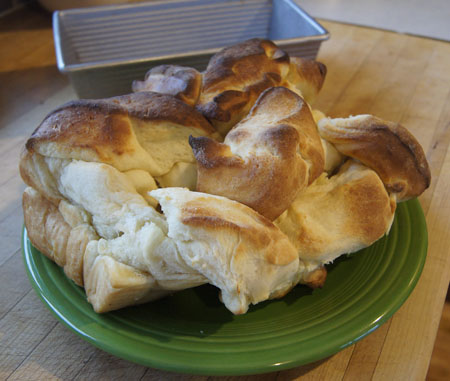 As you can see, my bread rose crazily! That’s why I suggest a bundt pan next time. Usually a 9×5-inch loaf pan is big enough for 2 1/2 cups flour – but this time it obviously wasn’t!
As you can see, my bread rose crazily! That’s why I suggest a bundt pan next time. Usually a 9×5-inch loaf pan is big enough for 2 1/2 cups flour – but this time it obviously wasn’t!
This monkey bread was delicious. Soft and buttery. Yes, I’d make this recipe again, but I’d cook it in a bundt pan.
Shall I keep this cookbook? Not sure. I’ve scanned in the pages I want, so I may recycle it.
